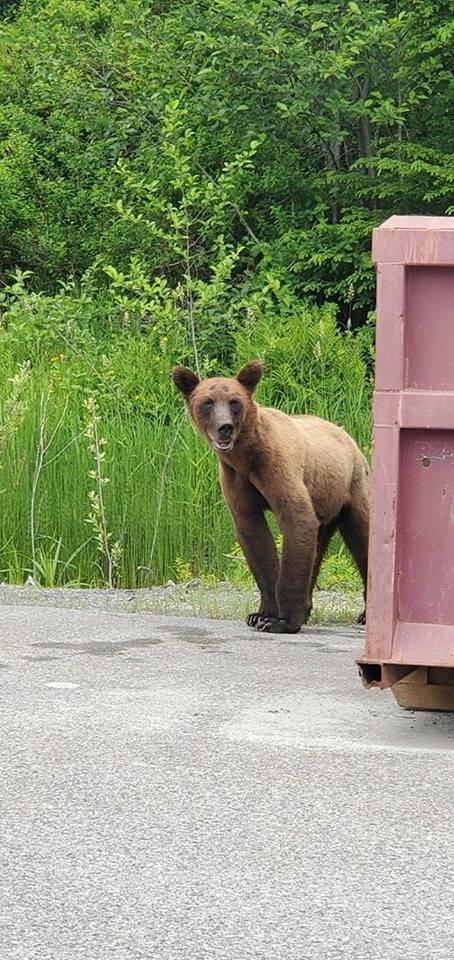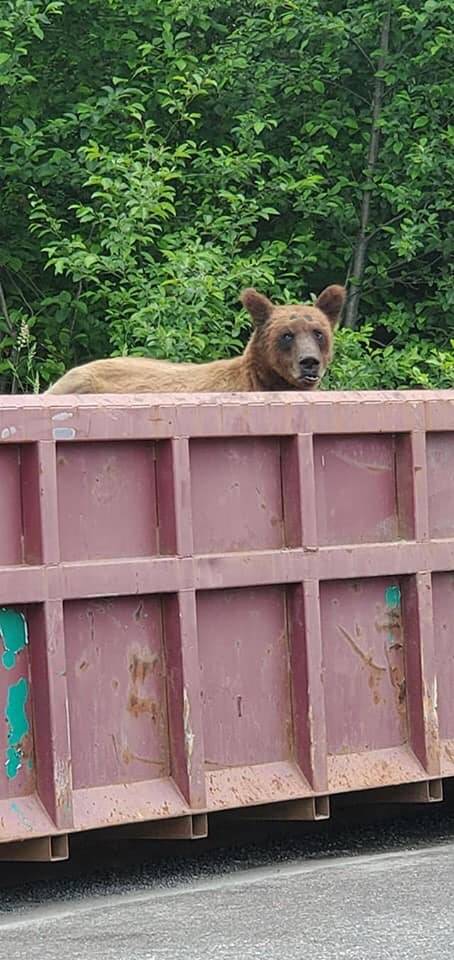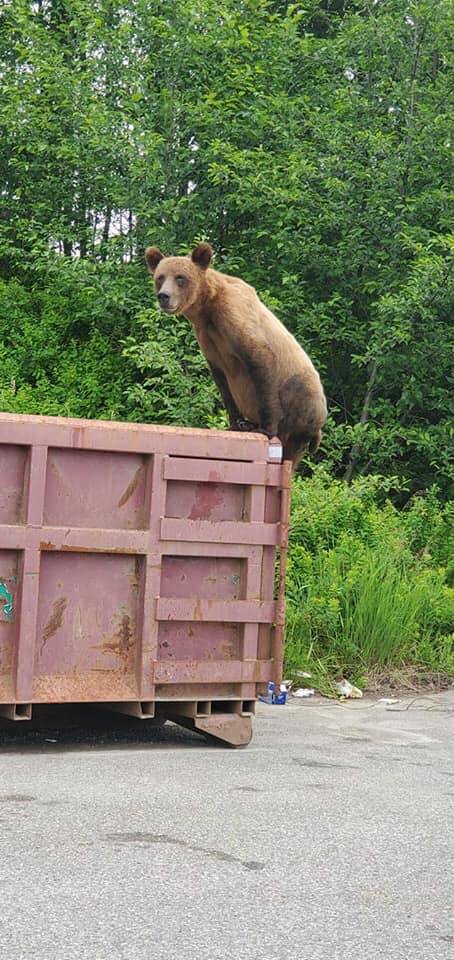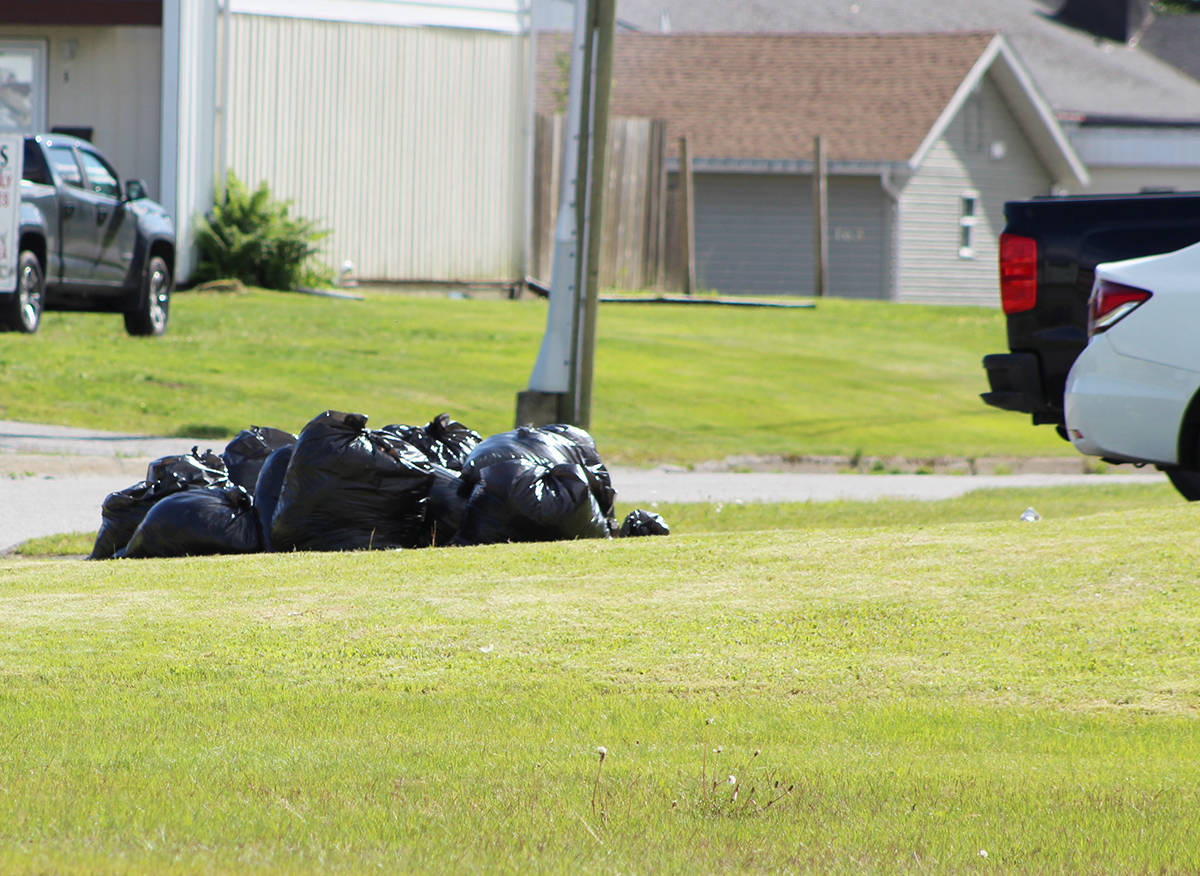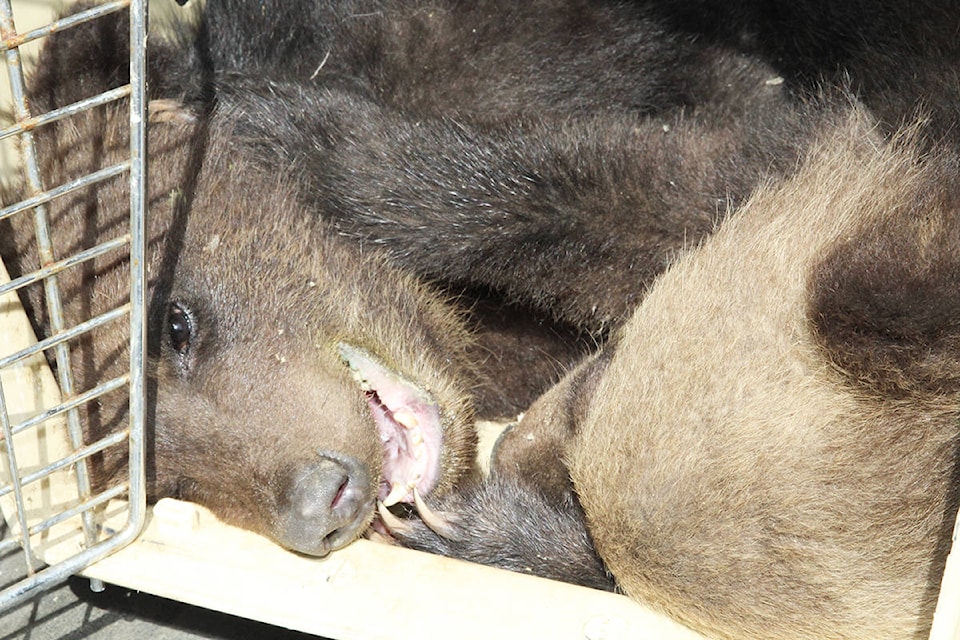“We may be the ones pulling the trigger, but it’s people who leave attractants out who are killing the bears.”
Speaking to the Northern Sentinel on Friday, June 14, Conservation Officer Service’s Sgt. Tracy Walbauer said it only takes one day of feeding on garbage for a bear to become habituated, which is when they become a danger to the public.
Walbauer and a fellow conservation officer had just darted and successfully captured two grizzly bear cubs at a vacant lot in Dewberry Street in Strawberry Meadows. The cubs are part of a family of three cubs that have been seen wandering around Kitimat for two weeks.
Walbauer suspects something happened to the cubs’ mom, which is why they were out on their own.
The two cubs that were caught on Friday are young enough to be rehabilitated, which means they get taken to the Northern Lights Wildlife Society bear sanctuary near Smithers.
Northern Lights society successfully releases bears back into the wild
There the orphaned cubs will be kept for up to 18 months until they are old enough to be released back into the wild.
At the time of going to press, conservation officers are still looking for the third cub and have traps set in the area where they caught the first two. The two cubs, and the third one should it be caught, are fortunate – they have a chance at survival.
Not so fortunate are the three, three-year-old grizzly cubs who have become a nuisance, raiding trash cans, pushing on doors and windows.
2018 was a bad year for our bears
They were spotted behind Kitimat General Hospital rummaging through rubbish bins.
“Four days ago they came to town and went straight for the garbage bins. They’re over 200 pounds each, so their mom probably kicked them out,” said Walbauer.
He said the three cubs and their mom were active in the community in 2018 and were already a problem. However, they went to den before conservation officers could locate and trap them.
“They’re not scared anymore. They have become habituated and are now a safety risk. They will be destroyed,” said Walbauer, adding that one of the cubs had been located that morning and been destroyed.
He said the cubs had been raiding trash cans left out by residents at night, returning to the thick bush in Strawberry Meadows to sleep it off, before returning to town the next morning.
According to Walbauer, what makes human garbage so attractive is the high calorific value – the bears become addicted to our trash, after just one day.
They will lick cans clean, drain pop cans and even lick barbecue grills that haven’t been cleaned off – anything that tastes good.
“It’s really frustrating – how do we get people to comply?” asked Walbauer, adding that simple measures like double-bagging trash, storing it in a shed at night or taking it to the landfill can save a bear’s life.
He said it’s clear people are not getting the message about attractants – as a result, conservation officers and the District of Kitimat have stepped up enforcement. On Thursday last week officers wrote two tickets and issued two Dangerous Wildlife Protection (DWP) orders.
A DWP order gives a business or home owner time to clean up attractants, failing which a ticket is issued, which can be up to $575. Conservation officers can also issue a $230 ticket to property owners for attracting bears to their property.
On Thursday afternoon, the Northern Sentinel drove around the Kildala neighbourhood where trash is collected on Friday – there were a number of residents who had already put trash cans and bags out on the front lawn for collection.
“We push the message about attractants and the situation seems to improve for a while. Then people get complacent and the problem starts up again,” said Walbauer, adding that this is worrying considering the fishing season is starting up.
He said the situation had improved in Kitamaat Village where bearproof lids have been installed on bins and a fish waste management program is running.
The Haisla Nation Council have been working together with the COS and the Grizzly Bear Foundation to develop a strategy that protects both the community and the bears.
He said another concern for the COS had been the influx of people to the region for the projects. However, companies like LNG Canada have been very proactive in developing waste and wildlife management strategies.
“LNG Canada is committed to having the safest camps in North America. The safety of their staff is very important. All the companies associated with the project have a plan in place to properly treat waste and to recycle,” said Walbauer.
